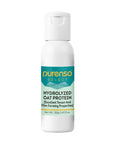
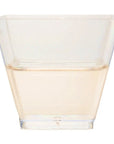
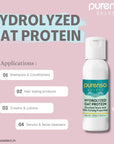
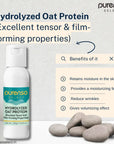
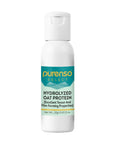
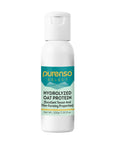
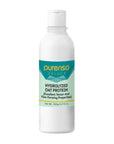
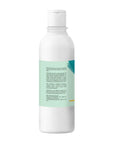
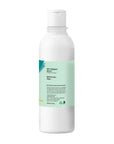
Hydrolysed Oat Protein (Liquid Form)
| What is Hydrolyzed Oat Protein? |
Hydrolyzed oat protein (or hydrolyzed oats; the names seem to be used interchangeably) is a liquid cosmetic ingredient made from oat protein that has been modified to be water-soluble. Hydrolyzed oat protein increases body, shine & manageability to hair as well as imparting protection and nourishment to skin. |
| INCI | Hydrolyzed oat protein |
| Usage rate | 0.5–8% |
| Applications | Shampoos, conditioners (leave-on, rinse-off, clear or oil-free), hair styling products, creams, lotions, serums, liquid hand, and facial cleansers. |
| Scent | Nothing noticeable in finished products |
| pH | 4–6 |
| Solubility | Water |
| Why do we use it in formulations? | Hydrolyzed oat protein helps boost the moisturizing properties of our products by helping hold water to the skin. |
| Strengths | Excellent moisture retention with improved skin feel. |
| Weaknesses | Those with severe wheat allergies may wish to avoid hydrolyzed oat protein due to possible cross-contamination concerns. |
| Alternatives & Substitutions | A different hydrolyzed protein would be the best substitution for hydrolyzed oat protein. Try hydrolyzed silk, baobab, quinoa, rice, or wheat proteins. |
| How to Work with It | Include it in the water phase of your recipe; it can be hot or cold processed. If I can put it in the cool-down phase of a formulation, I will. (Avoid exposing material to temperatures above 40°C (104°F). For external use only.) |
| Benefits |
|
PLEASE NOTE: This is a cosmetic ingredient and it is meant for external use only in cosmetic formulations. It should not be ingested. Product image and packaging shown above is a general representation of product. Product color may vary and packaging available may be different. Our products are for external use only, unless otherwise indicated. This information is for information purposes and not intended to diagnose, treat, cure, or prevent any disease.
This product is a cosmetic raw material and is intended for external use only in cosmetic and personal care formulations. It is not intended for internal consumption or medicinal use.
- Do not ingest.
- Keep out of reach of children.
- Avoid direct contact with eyes.
All product images are for illustrative purposes only. Actual product color, texture, or packaging may vary from batch to batch.
Information provided on this website is for educational purposes only and should not be considered or interpreted as medical advice.
While we do not offer products for internal use, we source only high-quality, pharmaceutical or food-grade ingredients. Ingredient purity and performance are critical in cosmetic applications, just as they are in ingestible products.
Please note:
Just because two products have the same name or CAS number does not guarantee the same grade, purity, or effectiveness. Always choose trusted suppliers. Choose Purenso for premium-grade ingredients you can rely on.
FREQUENTLY ASKED QUESTIONS









